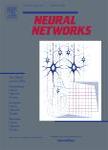版权所有:内蒙古大学图书馆 技术提供:维普资讯• 智图
内蒙古自治区呼和浩特市赛罕区大学西街235号 邮编: 010021

作者机构:Northeastern Univ Qinhuangdao Hebei Key Lab Marine Percept Network & Data Proc Qinhuangdao 066004 Peoples R China
出 版 物:《NEURAL NETWORKS》 (Neural Netw.)
年 卷 期:2025年第185卷
页 面:107181页
核心收录:
学科分类:1002[医学-临床医学] 1001[医学-基础医学(可授医学、理学学位)] 0812[工学-计算机科学与技术(可授工学、理学学位)] 10[医学]
基 金:National Natural Science Foundation of China Natural Science Foundation of Hebei Province [F2022501015] Fundamental Research Funds for the Central Universities [2023GFYD003]
主 题:Entity alignment Gating mechanism Graph attention network Temporal knowledge graph
摘 要:Entity alignment (EA) is a typical strategy for knowledge graph integration, aiming to identify and align different entity pairs representing the same real object from different knowledge graphs. Temporal Knowledge Graph (TKG) extends the static knowledge graph by introducing timestamps. However, since temporal knowledge graphs are constructed based on their own data sources, this usually leads to problems such as missing or redundant entity information in the temporal knowledge graph. Therefore, temporal knowledge graph entity alignment is a meaningful task to avoid the above problems. However, most existing methods tend to ignore the impact of direct and indirect neighborhood information on EA. Therefore, we propose a temporal knowledge graph entity alignment method with neighborhood distance awareness, namely Tem-DA. Tem-DA models direct and indirect neighbors separately, capturing directly connected neighbors with related entities and indirectly connected neighbors with unrelated entities through a distance detection module. Furthermore, we propose a gating mechanism weight the elements in the embedding matrix and through cross-entropy loss function with regularization terms to address adaptive fusion. This mechanism dynamically adjusts the weights of different feature embeddings, thus providing a more flexible and adaptive feature fusion strategy compared with traditional linear weight adjustment methods. Tem-DA effectively captures the temporal information of entities and take advantage of overlapping properties that may have multiple identical time intervals between different entities to encode the temporal information. For some entities that may lack sufficient temporal information, Tem-DA estimates the temporal characteristics of adjacent information and generates temporal embedding vectors. Experimental results on two monolingual TKG datasets show that Tem-DA outperforms popular baseline methods.